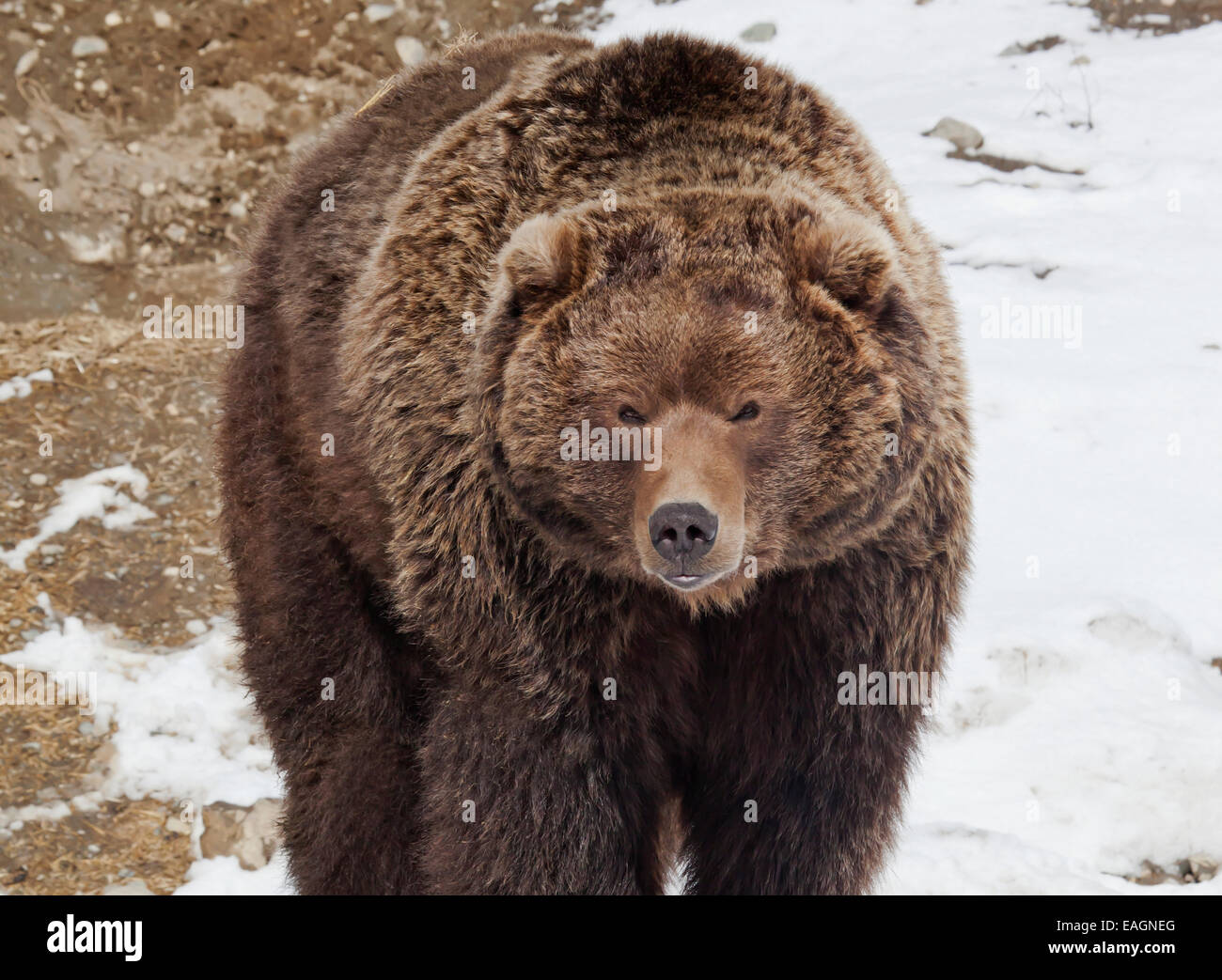

Incidents also occur when bears arouse after hibernation in the spring and are in another heightened period of feeding. Human – bear incidents are common before hibernation as bears are feeding frequently, roaming outside territories to find high calorie foods, and also seeking easily accessible anthropogenic foods, especially during drought conditions. Bears will gain 3-5 pounds each day during this time. Prior to hibernation, in a period known as hyperphagia, bears will spend up to 20 hours per day eating to gain enough fat to sustain their physiological needs associated with hibernation. Black bears tend to feed at dusk and dawn and it is not uncommon for bears to actively feed throughout the day. A common misconception is that bears feed only at night. Black bears can easily develop a taste for anthropogenic foods (food or other attractants having a human origin, e.g., trash, pet food). Diet: Black bears are omnivorous and opportunistic eaters, foraging mainly on herbaceous vegetation including roots and berries, but also feeding on insects, fish and mammals, including dead animals when available.

Mothers (sows) may be protective of their young and will send their cubs up trees or could attack if they perceive their cubs are threatened. Cubs are dependent on their mother's milk for 30 weeks and will reach independence at 16–18 months. If gestation is successful, a female will begin nursing her cubs during hibernation. Reabsorption of the eggs can occur if the female does not receive proper nutrients and caloric intake before entering hibernation. Gestation doesn’t begin until fertilized eggs implant in the female’s womb in November litters (typically 2 or 3 cubs) are born in late January to early February during hibernation.

Recovery was made possible because of voluntary landowner-incentive based habitat restoration programs and environmental regulations that stopped the net loss of forested lands in the Lower Mississippi River Alluvial River Valley and resulted in significant habitat gains. The Louisiana subspecies (Ursus americanus luteolus) was listed as Threatened under the ESA (1992) and was delisted on Ma(Federal Register Vol. The American black bear is not listed under the Endangered Species Act (ESA) anywhere within its range. Responsible human behavior and proper people management in black bear country deserves attention. Given the number and extensive range of black bears in North America, this is the bear species people are most likely to encounter. Black bears can vary in color from jet black to white. A female can have one to three cubs which will stay with her for up to three and a half years.Black bears (Ursus americanus) are the most abundant and widely distributed of the three species of North American bears they have been recorded in all Forest Service Regions. With delayed implantation, cubs are born midwinter. Mating usually occurs in June and July, with a pair coming together for one or two weeks and mating several times. During this time they eat nearly nonstop.įemale bears reach sexual maturity around six years of age. Berries, especially blueberries (Vaccinium uliginosum) and soapberries (Shepherdia canadensis) form the bulk of the diet starting in late July when grizzly bears go into a feeding frenzy called hyperphagia. Green vegetation is preferred through the summer. The roots of peavine (Hedysarum alpinum) are important spring and late fall food. They will scavenge carrion when available. They are also predators of caribou and moose and their calves. Grizzly bears are omnivorous, eating a mixed diet of grasses, berries, roots, fish and small mammals. During the breeding season, a male may attend a female for up to two weeks for mating. Grizzly bears can be seen in close proximity in areas of abundant food, such as berry patches and salmon spawning areas. Grizzly bears usually live as lone individuals, except for females accompanied by their cubs. The grizzly bear is characterized by a distinctive hump on the shoulders, a slightly dished profile to the face, and long claws on the front paws.


 0 kommentar(er)
0 kommentar(er)
